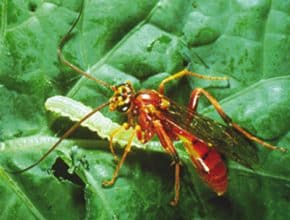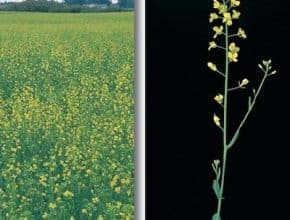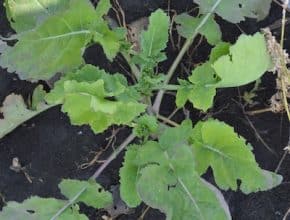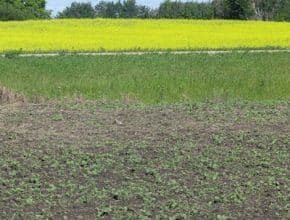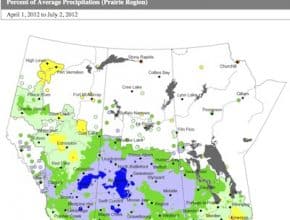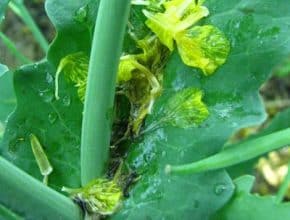The table above shows fungicides available to manage sclerotinia stem rot. The article answers a few common questions on sclerotinia stem rot management…
Canola Watch Posts
-
-
Beneficials. Lygus, bertha armyworm and diamondback moth have a number of natural enemies that will keep populations in check. These beneficial insects may not control an immediate pest threat that has already exceeded thresholds — growers will still have to spray in that case — but beneficials can keep a lid on populations. The key to preserving beneficial insects is…
-
1. Flowering percentage to determine timing for fungicide. The photo above from NDSU shows canola at 20% flower, which is when the application window opens. To assess flowering progress, concentrate on the main stem only. Count all flowers, including aborted flowers and developing pods. With 15 flowers main stem, the field is around 20% flower. Read the other nine…
-
Canola in fields with excess moisture will often show various signs of stress, including yellowing, purpling, stunted growth — or all of three. Excess moisture creates two problems for crop nutrition: (1) It can remove nutrient from the soil. And (2) it can “drown” roots and make it impossible for them to take up nutrients — even if nutrients are…
-
Life raft. Before you feed a drowning canola crop, check its vitals. You want to make sure it’s on the road to recovery before laying out a fertilizer feast. Rot risk. Moisture is the number one risk factor for sclerotinia stem rot, and most areas have moisture. Moisture in the two weeks before flowering increases apothecia emergence. To each its…
-
-
We have three "what is this?" type questions to test your agronomy eye. The answer key, which you'll see after completing the quiz, provides agronomy tips to go along with each question…
-
-
What happens to canola plants that are underwater for a few days? Here’s a detailed explanation from Murray Hartman, oilseed specialist with Alberta Agriculture and Rural Development…

